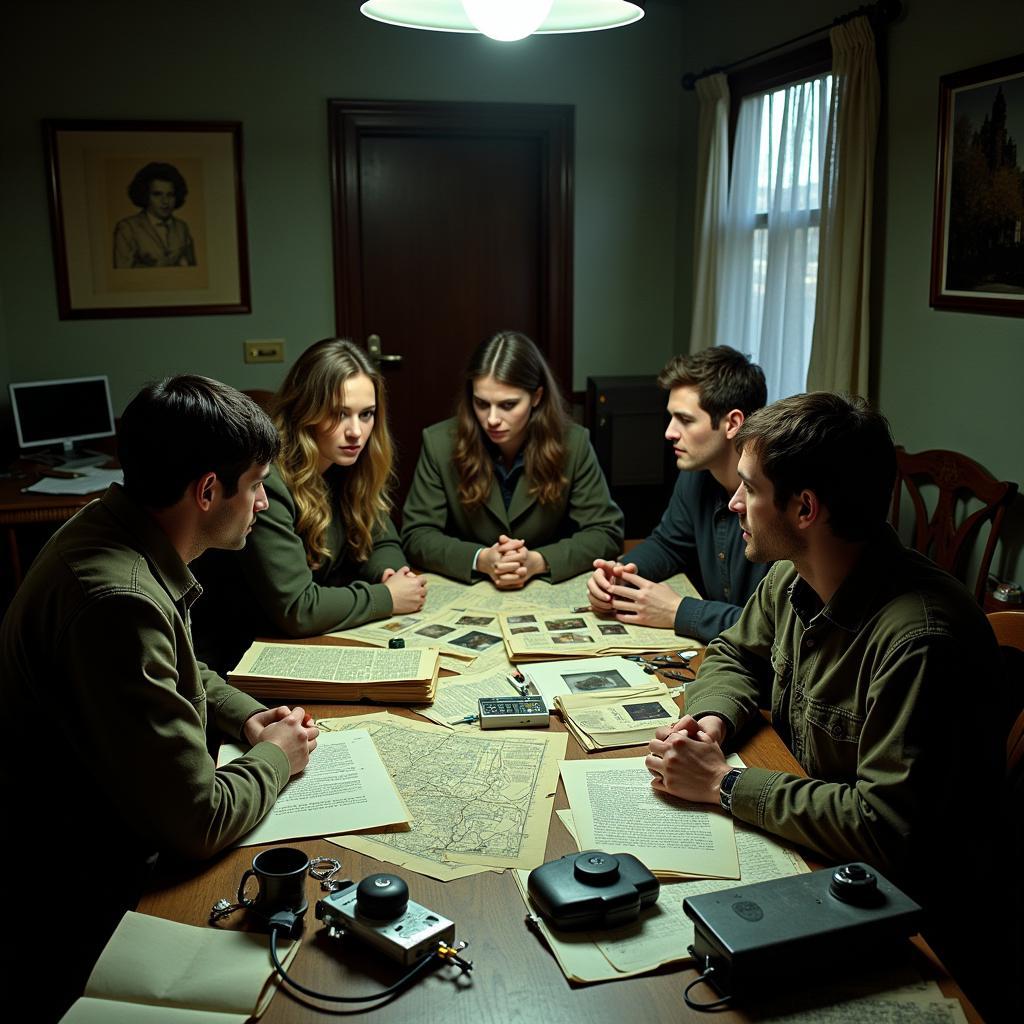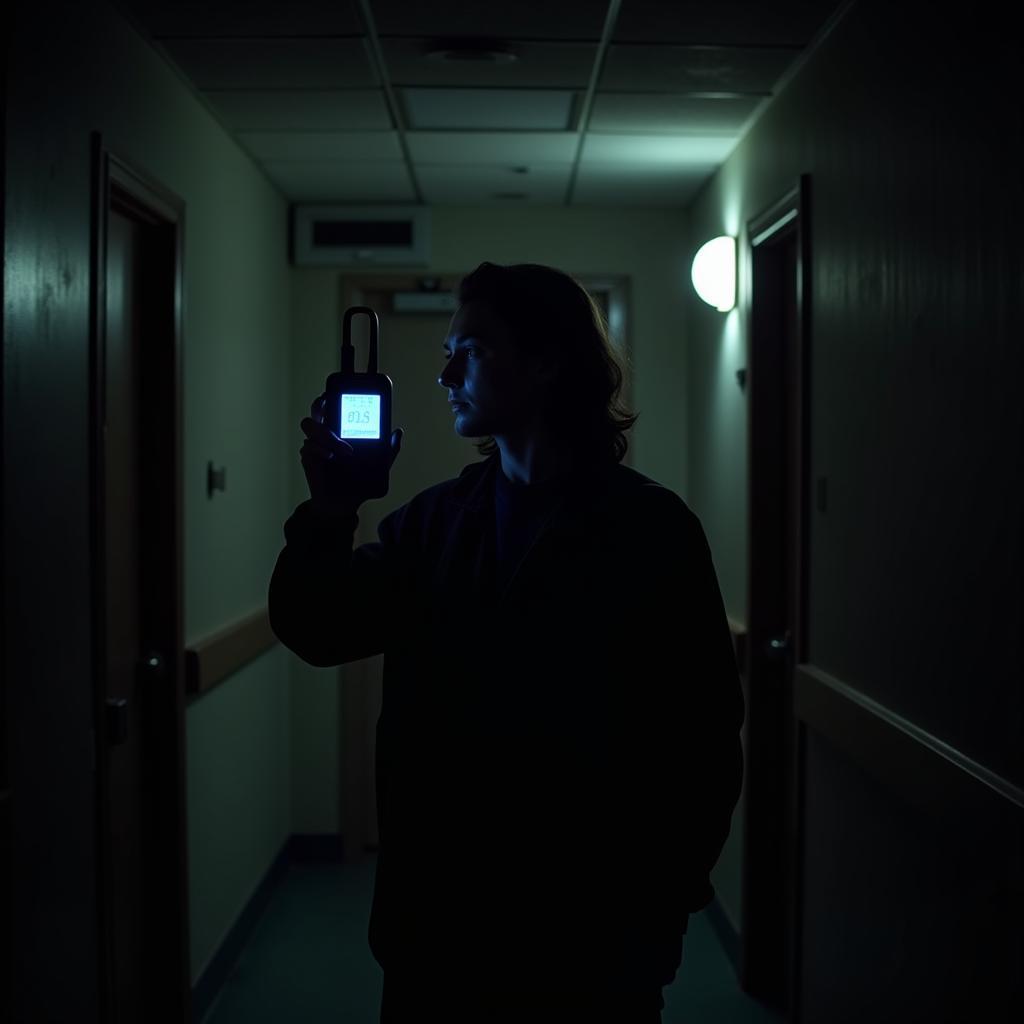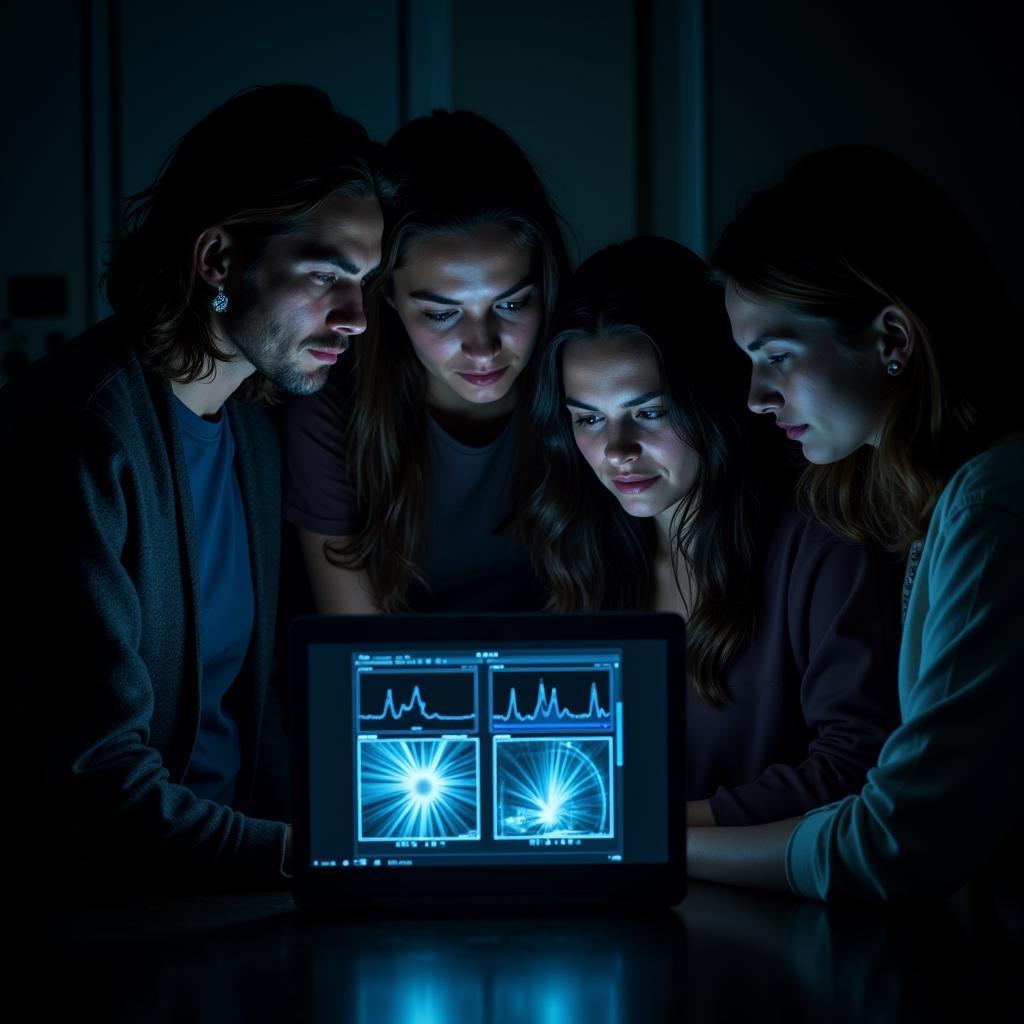The realm of paranormal research, while shrouded in mystery and skepticism, relies heavily on systematic investigation. A well-structured “Research Project Example” serves as a crucial roadmap for both budding and seasoned investigators, ensuring that their explorations into the unknown are both insightful and credible.
Delving into the Paranormal: Setting the Stage for Research
Before embarking on any paranormal investigation, establishing a strong foundation is paramount. This involves meticulously defining the research question. Are you examining electromagnetic fluctuations in a supposedly haunted location? Or perhaps, you’re attempting to document EVPs (Electronic Voice Phenomena) to establish communication with potential entities?
 Paranormal Investigation Team Planning Session
Paranormal Investigation Team Planning Session
Once the objective is clear, it’s essential to delve into existing literature. This might include historical accounts of the location, previous research findings, or even folklore and anecdotal evidence. Remember, a thorough understanding of the context can provide invaluable insights and prevent reinventing the wheel.
Methodologies and Tools: The Heart of a Research Project Example
The core of any credible Paranormal Research project lies in its methodology. Just as a scientist employs rigorous methods in a laboratory, paranormal investigators rely on a combination of traditional scientific techniques and specialized tools.
Embracing Scientific Rigor
- Data Collection: This could involve using EMF meters to detect electromagnetic fields, temperature sensors to identify cold spots, or audio recorders to capture EVPs.
- Observation: Detailed observation logs are crucial. Note any unusual sounds, visual anomalies, or physical sensations experienced during the investigation.
- Control Groups: Whenever possible, establish control groups. For instance, if you’re measuring temperature fluctuations, simultaneously monitor the temperature in a similar, non-haunted location.
 Paranormal Investigator Using EMF Meter
Paranormal Investigator Using EMF Meter
Specialized Tools: Unveiling the Unseen
- EVP Recorders: High-quality audio recorders are essential for capturing potential spirit voices, often unheard by the human ear.
- Infrared Cameras: These cameras detect heat signatures, potentially revealing the presence of entities or unexplained thermal anomalies.
- Dowsing Rods and Pendulums: While their effectiveness is debated, some investigators use these tools as a means of communicating with or sensing energies.
Analyzing the Findings: Where Research Project Examples Shine
The true value of a research project example lies in its ability to guide investigators through data analysis. Raw data, whether EMF readings, audio recordings, or observation logs, require meticulous scrutiny.
Seeking Patterns and Correlations
- Cross-Referencing: Compare data collected from different tools and observations. Do spikes in EMF readings coincide with temperature drops or unusual sounds?
- Statistical Analysis: If dealing with quantifiable data, apply statistical analysis to identify significant deviations or patterns.
- Objective Interpretation: Avoid jumping to conclusions. Correlations don’t necessarily imply causation.
 Paranormal Research Team Analyzing Data
Paranormal Research Team Analyzing Data
Conclusion: Illuminating the Path Forward
A well-executed research project example serves as a beacon in the often murky world of paranormal investigation. By adhering to structured methodologies, employing a combination of scientific techniques and specialized tools, and maintaining objectivity in data analysis, we can strive to shed light on the mysteries that lie beyond our current understanding.
While definitive answers may remain elusive, the pursuit of knowledge and understanding through methodical research remains a cornerstone of responsible paranormal investigation. For those seeking guidance on their journey into the unknown, resources such as research project examples, research proposal timeline example, and even exploring at home researcher jobs can be invaluable. Remember, the most compelling evidence emerges from meticulous research and a commitment to uncovering the truth.